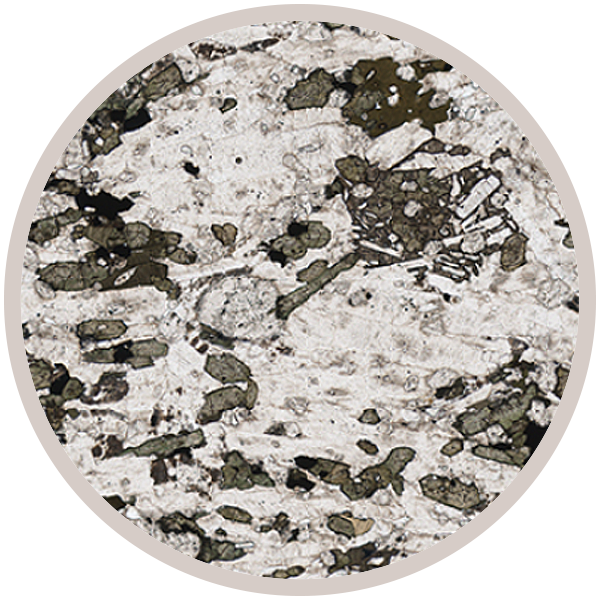
Fact sheet
Rotation 1 - pyrochlore with fluorite inclusion
Rotation 2 - diopside and fluorapatite mantled by biotite
The 1138 ± 29 Ma Lackner Lake carbonatite-alkalic silicate rock complex is an ovoid 5 km by 6 km intrusion situated within the Kapuskasing structural zone in northeastern Ontario near the town of Chapleau, Ontario. It has notable REE, U, Th and Nb concentrations mainly in the form of fluorapatite and pyrochlore mineralisation.
The Ilimaussaq alkaline complex is the type locality for agpaitic nepheline syenites and represents an enormous concentration of rare elements, notably Li, Be, Nb, Zr, REE, Y, Th and U. Around 220 mineral species have been identified. We can't identify all the minerals present in these samples. Email us at virtual-microscope@open.ac.uk if you can help.
Note we have recently expanded the collection to include other syenite complexes worldwide.
See also Alex Strekeisen's great website for more information on syenite complexes.
Sample details
More from this collection








